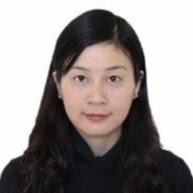Xing N Li
age ~63
from Reading, MA
- Also known as:
-
- Li N Xing
- Xing L Zhou
- Xin G Li
- Xing Xhou
Xing Li Phones & Addresses
- Reading, MA
- 7 Cider Mill Ln, Lexington, MA 02421
- Cherry Valley, IL
- East Amherst, NY
- Rockville, MD
- East Aurora, NY
- Falls Church, VA
- Williamsville, NY
- Winnebago, IL
Work
-
Position:Professional/Technical
Education
-
Degree:Associate degree or higher
Isbn (Books And Publications)

Resumes

Insead
view sourceLocation:
Lexington, MA
Industry:
Maritime
Work:
Berge Bulk Apr 2018 - Dec 2019
Senior Chartering and Risk Executive
Berge Bulk Mar 2016 - Mar 2018
Chartering and Risk Executive
Berge Bulk Jun 2014 - Feb 2016
Commercial Operations Officer
Fortescue Metals Group May 2013 - Jul 2013
Ship Operations Intern
May 2013 - Jul 2013
Insead
Senior Chartering and Risk Executive
Berge Bulk Mar 2016 - Mar 2018
Chartering and Risk Executive
Berge Bulk Jun 2014 - Feb 2016
Commercial Operations Officer
Fortescue Metals Group May 2013 - Jul 2013
Ship Operations Intern
May 2013 - Jul 2013
Insead
Education:
Nanyang Technological University 2010 - 2014
Bachelors, Bachelor of Science Bi Norwegian Business School 2012 - 2012
Bachelors, Bachelor of Science Bi Norwegian Business School 2012 - 2012
Skills:
Shipping
Microsoft Word
Microsoft Office
Microsoft Excel
International Shipping
Transportation
Inco Terms
Risk Management
Bunker Hedging
Commodity Risk Management
Microsoft Word
Microsoft Office
Microsoft Excel
International Shipping
Transportation
Inco Terms
Risk Management
Bunker Hedging
Commodity Risk Management
Languages:
English
Mandarin
Korean
Mandarin
Korean

Senior Program Manager
view sourceLocation:
Lexington, MA
Industry:
Medical Devices
Work:
Philips
Senior Program Manager
Dräger
Project Manager
Parker Hannifin Aug 2009 - May 2012
Project Engineer
Lytron Jan 2009 - Aug 2009
Project Engineer
Hamilton Sundstrand Sep 2000 - Dec 2008
Staff Engineer
Senior Program Manager
Dräger
Project Manager
Parker Hannifin Aug 2009 - May 2012
Project Engineer
Lytron Jan 2009 - Aug 2009
Project Engineer
Hamilton Sundstrand Sep 2000 - Dec 2008
Staff Engineer
Education:
University of Wisconsin - Madison 2001 - 2003
Master of Science, Masters, Management, Engineering The Catholic University of America 1993 - 1995
Masters, Master of Science In Mechanical Engineering, Mechanical Engineering
Master of Science, Masters, Management, Engineering The Catholic University of America 1993 - 1995
Masters, Master of Science In Mechanical Engineering, Mechanical Engineering
Skills:
Product Development
Engineering Management
Aerospace
Manufacturing
Six Sigma
Lean Manufacturing
Engineering
Project Management
Engineering Management
Aerospace
Manufacturing
Six Sigma
Lean Manufacturing
Engineering
Project Management
Certifications:
Project Management Institute
Project Management Professional Certification
Project Management Professional Certification

Xing Li
view source
Xing Li
view source
Xing Li
view source
Xing Li
view source
Xing Li
view source
Xing Eap Li
view sourceName / Title
Company / Classification
Phones & Addresses
Director
J International Art Company
Us Patents
-
Method For Multiplexed Analyte Detection
view source -
US Patent:20050191687, Sep 1, 2005
-
Filed:Feb 26, 2005
-
Appl. No.:11/067237
-
Inventors:Tianxin Wang - Columbia MD, US
Xing Li - Vienna VA, US -
International Classification:C12Q001/68
C07H021/04
C12M001/34 -
US Classification:435006000, 536024300, 435287200
-
Abstract:The methods and compositions provided herein are based on use of reporter system to detect multiple analyte in a sample. The reporter system can be a signal amplification system that includes a carrier, typically a particle containing an analyte binding moiety, and multiple copies of a signaling moiety. Different reporter system can bind with different analyte. Different reporter system or their signaling moiety can be distinguished and detected. In various embodiments, the signaling moiety is physically released from its carrier after the carrier has been bound to the analyte and distinguished and detected after the release.
-
Chemiluminescent Methods And Reagents For Analyte Detection
view source -
US Patent:20110097753, Apr 28, 2011
-
Filed:Oct 15, 2008
-
Appl. No.:12/287916
-
Inventors:Tianxin Wang - Boyds MD, US
Xing Xiang Li - Vienna VA, US -
International Classification:C12Q 1/66
C07H 17/00
C07H 15/26 -
US Classification:435 8, 536 181, 536 174
-
Abstract:The present invention relates to chemiluminescent method and regent to detect analyte. One aspect of the current invention relates to using enzyme substrate that can be cleaved by target enzyme to release chemiluminescent compound giving light signal for the detection of varieties of target enzymes. Another aspect of the current invention relates to use chemiluminescent enzyme coupled with analyte binding molecules to detect specific analyte molecules in a homogenous phase.
-
Reagents And Kits For Detection Of Influenza Virus And The Like
view source -
US Patent:20110189655, Aug 4, 2011
-
Filed:Feb 2, 2011
-
Appl. No.:13/019737
-
Inventors:Xing Xiang Li - Vienna VA, US
Tianxin Wang - Boyds MD, US -
International Classification:C12Q 1/70
C07H 15/26
C12Q 1/66 -
US Classification:435 5, 536 174, 435 18, 435 8
-
Abstract:The present invention relates to reagents and methods for influenza virus detection. These reagents and methods disclosed in the present invention enable simple, rapid, specific and sensitive detection of influenza virus types A and B. These reagents are N-acetylneuraminic acid-firefly luciferin conjugates which can be cleaved by influenza virus neuraminidase.
-
Generating And Deploying Security Policies For Microsegmentation
view source -
US Patent:20230104751, Apr 6, 2023
-
Filed:Oct 19, 2022
-
Appl. No.:17/969314
-
Inventors:- San Jose CA, US
Peter Nahas - Watertown MA, US
Xing Li - Burlington MA, US
Suji Suresh - Westford MA, US
Daniel R. Perkins - Boston MA, US
Peter Smith - Acton MA, US -
International Classification:H04L 45/02
H04L 9/40
H04L 47/70 -
Abstract:Systems and methods include receiving network communication information about hosts in a network and applications executed on the hosts; automatically generating one or more microsegments in the network based on analysis of the obtained network communication information, wherein each microsegment of the one or more microsegments is a grouping of resources including the hosts and the applications executed on the hosts that have rules for network communication; and providing the one or more microsegments to one or more hosts of the hosts, for use by the one or more hosts to allow or block communications locally based on the one or more microsegments. Each of the one or more microsegments can be a grouping of workloads inside a data center.
-
Adeno Associated Virus Vectors For The Treatment Of Hunter Disease
view source -
US Patent:20210332383, Oct 28, 2021
-
Filed:Dec 9, 2020
-
Appl. No.:17/116098
-
Inventors:- Lexington MA, US
Xing Li - LEXINGTON MA, US -
International Classification:C12N 15/86
C12N 9/16
A61K 9/00 -
Abstract:The present disclosure provides, among other things, a recombinant adeno-associated virus (rAAV) vector comprising an AAV8 or AAV9 capsid and a codon-optimized sequence encoding a human iduronate-2-sulfatase (I2S) enzyme. The disclosure also provides a method of treating a subject having Hunter syndrome (MPS II), comprising administering to the subject in need thereof a recombinant adeno-associated virus (rAAV) vector comprising an AAV8 or AAV9 capsid, and a promoter operably linked to a nucleic acid sequence that encodes iduronate-2-sulfatase (I2S), and wherein administering results in an increase in I2S enzymatic activity in the subject.
-
Auto Re-Segmentation To Assign New Applications In A Microsegmented Network
view source -
US Patent:20210314250, Oct 7, 2021
-
Filed:Jun 17, 2021
-
Appl. No.:17/350180
-
Inventors:- San Jose CA, US
Peter Nahas - Watertown MA, US
Xing Li - Burlington MA, US
Suji Suresh - Westford MA, US
Daniel R. Perkins - Boston MA, US
Peter Smith - Acton MA, US -
International Classification:H04L 12/751
H04L 12/911
H04L 29/06 -
Abstract:Systems and methods include, subsequent to performing auto segmentation on a network that includes a set of policies of allowable and block communications, observing communication between a plurality of hosts on the network; determining unassigned communication paths based on the observing that are either blocked because of a lack of a policy of the set of policies or because there is no policy of the set of policies for coverage thereof; and assigning the unassigned communication paths to corresponding policies of the set of policies. The assigning can be based on heuristics. The assigning can be performed without reperforming auto segmentation.
-
Aav Triple-Plasmid System
view source -
US Patent:20210275614, Sep 9, 2021
-
Filed:Oct 24, 2019
-
Appl. No.:17/288141
-
Inventors:- Osaka, JP
Xing LI - Jamaica Plain MA, US -
Assignee:Takeda Pharmaceutical Company Limited - Osaka
-
International Classification:A61K 35/761
A61K 38/17 -
Abstract:A triple-plasmid system for producing recombinant adeno-associated viruses is disclosed.
-
Semi-Automatic Communication Network Microsegmentation
view source -
US Patent:20200396255, Dec 17, 2020
-
Filed:Jun 11, 2020
-
Appl. No.:16/898997
-
Inventors:- San Jose CA, US
Aparna Ayikkara - Brookline NH, US
Omar Baba - Winchester MA, US
Daniel Einspanjer - Salem NH, US
Anthony Gelsomini - Westwood MA, US
Thomas C. Hickman - Hollis NH, US
Peter Kahn - Southborough MA, US
Andriy Kochura - North Andover MA, US
Nikitha Koppu - Shrewsbury MA, US
Scott Laplante - Bedford NH, US
Xing Li - Burlington MA, US
Raymond Brian Liu - Lexington MA, US
Sean Lutner - Norfolk MA, US
Michael J. Melson - Arlington MA, US
Peter Nahas - Watertown MA, US
John O'Neil - Watertown MA, US
Herman Parfenov - Andover MA, US
Joseph Riopel - Worcester MA, US
Suji Suresh - Westford MA, US
Harry Sverdlove - North Reading MA, US -
International Classification:H04L 29/06
H04W 12/08
H04L 29/08
H04L 12/24 -
Abstract:A computer system automatically generates a proposal for performing microsegmentation on a network. The system provides output representing the proposed microsegmentation to a user. The user provides input either approving or disapproving of the proposed microsegmentation. If the user approves of the proposed microsegmentation, then the system implements the microsegmentation. Otherwise, the system does not implement the proposed microsegmentation. This process may be repeated for a plurality of proposed microsegmentations within the same network, and may be repeated over time to modify one or more existing microsegmentations. The system advantageously performs the vast majority of the work required to microsegment the network automatically, leaving only the task of review and approval to the user. This both saves a significant amount of time and increases the quality of the microsegmentation in comparison to microsegmentation solely performed manually by one or more humans.

Xing Qi Li
view source
Xing Xing Li
view source
Xing Chen Li
view source
Zhang Xing Li
view source
Xing Li
view source
Xing Li
view source
Xing Li
view source
Xing Li
view sourceMyspace
Googleplus

Xing Li
Work:
Merck & Co. - Research Intern (5)
Education:
Cornell University - Biological Engineering

Xing Li

Xing Li

Xing Li

Xing Li

Xing Li

Xing Li

Xing Li
Flickr
Youtube
Classmates

Xing Li
view sourceSchools:
Alberta College Edmonton Azores 2001-2005
Community:
Marion Henry, Kurt Schacker

Canisius College - Busine...
view sourceGraduates:
Michele Laski (2001-2002),
Sean McGillicuddy (1984-1988),
Gregory Diaz (1996-1999),
Earl Martin (1972-1976),
Jian Xing LI (1994-1996)
Sean McGillicuddy (1984-1988),
Gregory Diaz (1996-1999),
Earl Martin (1972-1976),
Jian Xing LI (1994-1996)

Alberta College, Edmonton...
view sourceGraduates:
Warren Tsang (1968-1972),
Houghton Wan (1992-1993),
Emelda Apique (1997-2001),
Xing Li (2001-2005)
Houghton Wan (1992-1993),
Emelda Apique (1997-2001),
Xing Li (2001-2005)
Plaxo

li xing
view sourceArchitect at De Stefano + Partners
Get Report for Xing N Li from Reading, MA, age ~63















